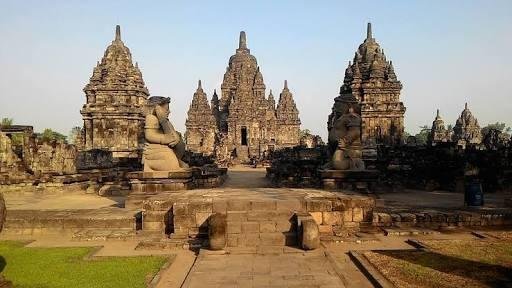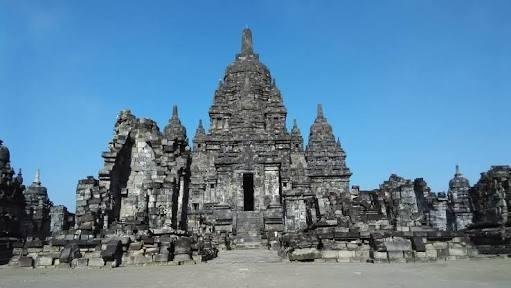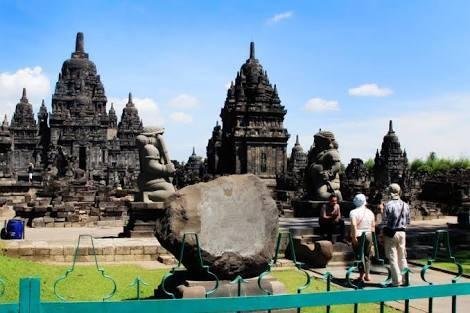
Sewu Temple or Manjusrighra is a temple built in 8th century BUDDHA which is just eight hundred meters to the north of Prambanan Temple. Sewu Temple is the second largest Buddhist temple complex after Borobudur Temple in Central Java. Sewu temple is older than Borobudur and Prambanan. Although the original has 249 temples, by the local community this temple is called "Sewu" which means one thousand in Javanese. This naming is based on the legend of Loro Jonggrang.
Administratively, the Sewu Temple complex is located in Dukuh Bener, Bugisan Village, Prambanan District, Klaten District, Central Java Province.

Based on the Ancient Inscription dated 782 and Manjusrigrha inscription that dates 792 and was discovered in 1960, the original name of this temple is "Prasada Vajrasana Manjusrigrha". The term Prasada means temple or temple, while Vajrajasana means where Wajra (diamond or lightning) reigns, while Manjusri-grha means Rumah Manjusri. Manjusri is one of Boddhisatwa in buddhism. Sewu Temple is estimated to be built in the 8th century AD at the end of the reign of Rakai Panangkaran. Rakai Panangkaran (746-784) is the renowned king of the ancient Mataram kingdom.
This temple complex may have been restored, and expanded during the reign of Rakai Pikatan, a prince of the Sanjaya dynasty who married Pramodhawardhanidari of the Sailendra dynasty. After the Sanjaya dynasty reigned its people still adhere to the previous religion. The existence of the Buddhist temple Sewu side by side with the Hindu Prambanan temple shows that since ancient times in Java Hindus and Buddhas lived in harmony and religious tolerance. Due to the magnificence and vastness of this temple complex, Sewu temple is presumed to be a Buddhist temple of the Kingdom, as well as an important center of Buddhist practice in the past. This temple is located in the valley of Prambanan which stretches from the southern slopes of Mount Merapi in the north to the Sewu mountains to the south, around the border of Yogyakarta with Klaten regency, Central Java. In this valley scattered temples and archaeological sites are only a few hundred meters away from each other. This indicates that this area is an important area of meaning in the religious, political, and urban life sectors of ancient Javanese society.

This temple was badly damaged by the earthquake in May 2006 in Yogyakarta and Central Java in the south. Damage to the structure of the building is very real and the main temple suffered the most severe damage. Fractional rocks scattered on the ground, cracks and fractures between stone connections visible. To prevent the collapse of the building, the iron frame is installed in all four corners of the building to support and retain the body of the main temple. Although the site reopened for visitors a few weeks later after the earthquake in 2006, all parts of the main temple remained closed and should not be entered for security reasons.
Now that it has been restored, the main temple metal framework has been removed and visitors can enter the room in the main temple.
Those temples are full of history, I wish I could travel there some day
Downvoting a post can decrease pending rewards and make it less visible. Common reasons:
Submit